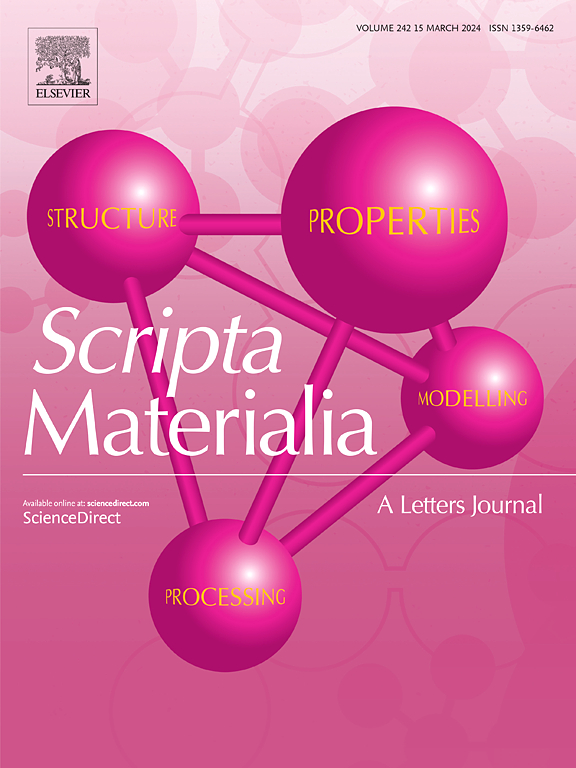Lattice misfit design and characterisation in BCC superalloys
IF 5.3
2区 材料科学
Q2 MATERIALS SCIENCE, MULTIDISCIPLINARY
引用次数: 0
Abstract
BCC superalloys are a promising class of high-temperature materials with a wide range of lattice misfit values, ranging from near-zero to ∼8 %. Analogous to nickel superalloys, lattice misfit combined with elastic anisotropy dictates precipitate morphology (spherical, cuboidal, plate/needle-like), coarsening kinetics, strengthening mechanisms, and microstructure evolution, making misfit control critical for tailoring microstructural stability and creep resistance. However, misfit characterisation, especially at high temperatures, is still in its infancy to establish its links with mechanical properties. This perspective emphasises three aspects of BCC superalloys: representative misfit-driven microstructures and temperature-dependent misfit evolution, state-of-the-art diffraction techniques for high-temperature misfit quantification, and machine learning frameworks to accelerate alloy design involving misfit. By consolidating diverse misfit data and advanced characterisation/modelling strategies, we outline strategies to bridge computational and experimental gaps, advocating for physics-informed models and high-throughput techniques to design next-generation BCC superalloys and motivate systematic studies on the misfit-property relationship in this nascent material class.
BCC高温合金晶格失配设计与表征
BCC高温合金是一类很有前途的高温材料,其晶格失配值范围很广,从接近零到8%。与镍高温合金类似,晶格失配结合弹性各向异性决定了析出相形态(球形、立方体、板状/针状)、粗化动力学、强化机制和微观结构演变,因此失配控制对于调整微观结构稳定性和抗蠕变性能至关重要。然而,失配表征,特别是在高温下,仍然处于起步阶段,以建立其与机械性能的联系。这一观点强调了BCC高温合金的三个方面:典型的错配驱动的微观结构和温度依赖的错配演变,最先进的高温错配量化衍射技术,以及加速涉及错配的合金设计的机器学习框架。通过整合不同的错配数据和先进的表征/建模策略,我们概述了弥合计算和实验差距的策略,倡导物理信息模型和高通量技术来设计下一代BCC高温合金,并在这一新兴材料类别中激发对错配-性能关系的系统研究。
本文章由计算机程序翻译,如有差异,请以英文原文为准。
求助全文
约1分钟内获得全文
求助全文
来源期刊

Scripta Materialia
工程技术-材料科学:综合
CiteScore
11.40
自引率
5.00%
发文量
581
审稿时长
34 days
期刊介绍:
Scripta Materialia is a LETTERS journal of Acta Materialia, providing a forum for the rapid publication of short communications on the relationship between the structure and the properties of inorganic materials. The emphasis is on originality rather than incremental research. Short reports on the development of materials with novel or substantially improved properties are also welcomed. Emphasis is on either the functional or mechanical behavior of metals, ceramics and semiconductors at all length scales.
 求助内容:
求助内容: 应助结果提醒方式:
应助结果提醒方式:


